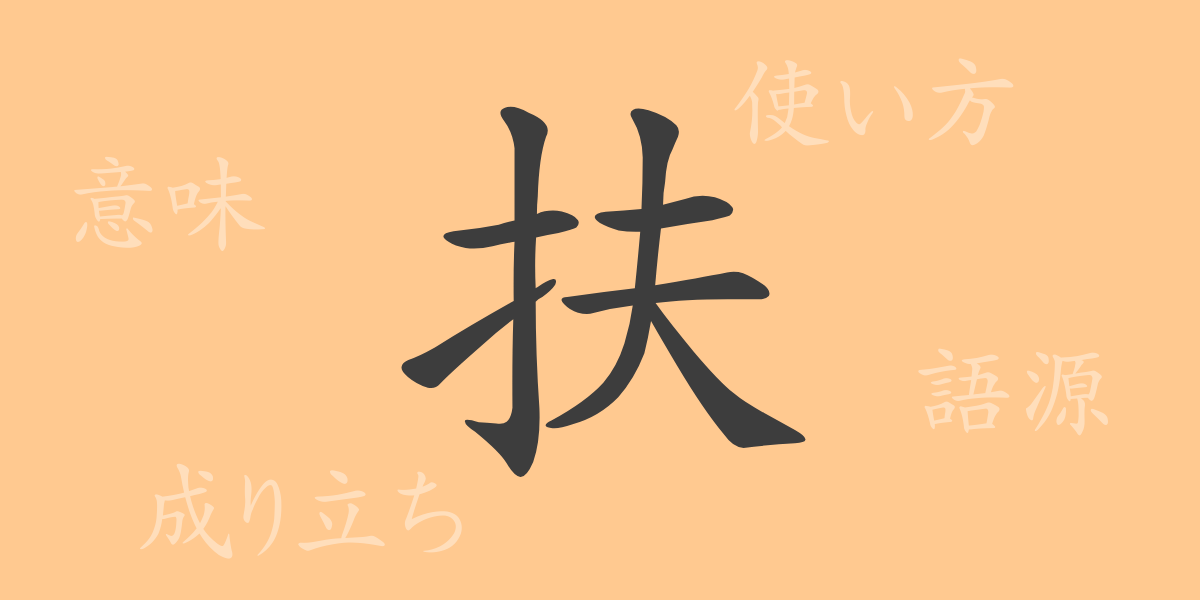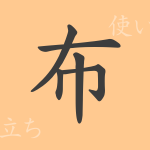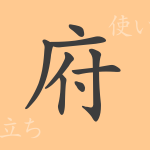Japanese (にほんご, Nihongo) has many kanji (かんじ, Kanji), each with its unique history and meaning. The kanji “扶” (ふ, Fu) is not frequently used in everyday life, but its presence as a commonly used kanji in Japan is significant. In this article, we will delve into the origin, meaning, usage, readings, and related idioms and phrases of “扶” (ふ, Fu), uncovering the charm of this kanji.
The Origin (語源, Gogen) of 扶 (ふ, Fu)
The kanji “扶” (ふ, Fu) is a character that originated in ancient China. Kanji characters have various origins, such as pictographs and ideographs. “扶” (ふ, Fu) is classified as an ideograph because its shape represents a “hand supporting” something. This kanji, which mimics the shape of a supporting hand, came to mean “to help” or “to support.”
Meaning and Usage of 扶 (ふ, Fu)
The kanji “扶” (ふ, Fu) means “to support,” “to help,” or “to lift up.” Metaphorically, it can also mean “to lend a hand” or “to assist.” It is commonly used in combination with other kanji to form compound words. For example, the compound word “扶養” (ふよう, Fuyou) means “to support someone’s livelihood.”
Readings, Stroke Count, and Radical of 扶 (ふ, Fu)
Understanding the readings and structure of the kanji “扶” (ふ, Fu) is essential.
- Readings: The on’yomi (音読み, On’yomi) reading is “フ” (ふ, Fu), and there is no specific kun’yomi (訓読み, Kun’yomi) reading.
- Stroke Count: It consists of 8 strokes in total.
- Radical: The radical is “扌” (てへん, Tehen), which classifies it among kanji related to the hand.
Compound Words, Idioms, and Proverbs Using 扶 (ふ, Fu) and Their Meanings
Compound words, idioms, and proverbs containing “扶” (ふ, Fu) strongly reflect its basic meaning. Here are some examples:
- 扶養 (ふよう, Fuyou): To support someone else’s livelihood.
- 扶助 (ふじょ, Fujo): To help and support.
- 扶翼 (ふよく, Fuyoku): To help and enable someone to soar. Also, to lend strength and support.
- 扶桑 (ふそう, Fusou): An ancient Chinese term referring to Japan. Also, another name for the holly tree, a native plant of Japan.
These compound words and idioms vividly reflect the meanings of “support” and “help” inherent in “扶” (ふ, Fu).
Summary of 扶 (ふ, Fu)
The kanji “扶” (ふ, Fu), as its shape suggests, embodies the image of a supporting hand, expressing the importance of mutual assistance and support among people. As a commonly used kanji in Japan, and through its use in various compound words and idioms, it is firmly rooted in our language. Understanding “扶” (ふ, Fu) allows for a deeper appreciation of the depth of the Japanese language and the meanings embedded in each kanji character.

























